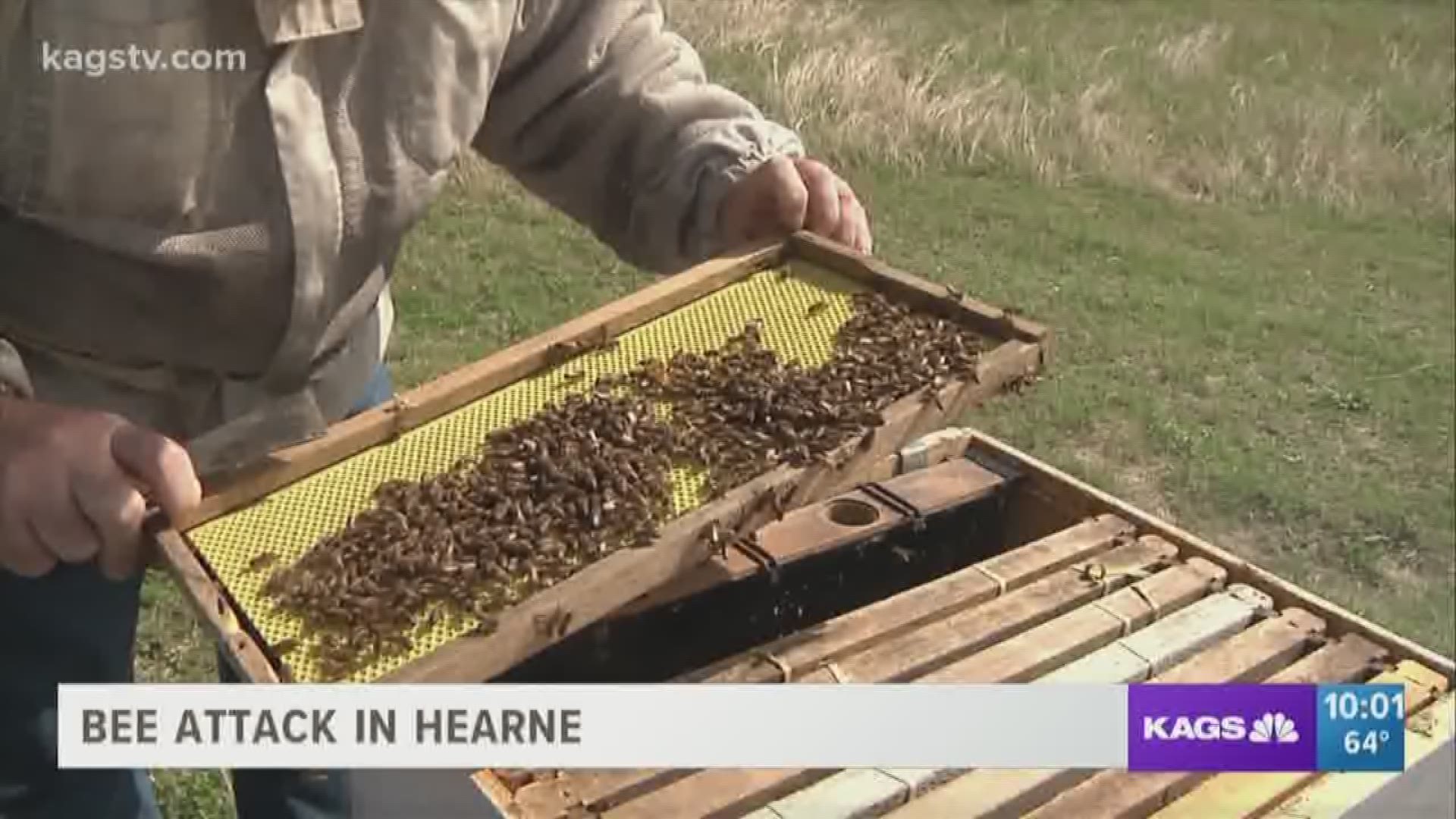HEARNE – The City of Hearne is warning residents of bee activity in the area after a bee attack early Monday morning.
Johnny Kilo was attacked while he was mowing his lawn, the city posted on their Facebook page.
The City of Hearne set up barricades to inspect different areas, they have since been taken down, but they are still warning of high bee activity in some areas.
When bees takeover a dwelling, it is important to know the safe ways to remove a hive.
Chris Barnes with Cornerstone Bees said there is a difference between an established colony and a swarm.
A swarm is a big ball of bees, looking for a cavity or home to create a new colony. An established colony is generally inside a structure - bees are creating honey and the queen bee is laying her eggs.
A swarm, generally speaking, is more gentle and easier to remove, Barnes said. An established colony is different.
To get a established colony out, you have to expose an entire hive, he said. This is where he would recommend calling someone who is specialized in bee-removals.
To determine if there is an established colony, Barnes said to look for bees coming in and out of a hole. A small colony can have up to 5,000 bees inside. So, an active colony would have about 100 bees coming in and out of an area.
Around April, and the warmer spring seasons, bees start to swarm more, said Brien Binford with Binford Insect Control.
Binford said there are many seasons when swarms and colonies are more severe, and this season they have been “getting a lot of calls.”
When tying to handle a swarm or colony, Barnes said homeowners should not spray them. Spraying them will only get the outside of the colony and spoil the honey, but will not take care of the bees inside.
Many times, someone who is specialized in bee-removal can go out and simply remove the bees from the effected area by vacuuming or cutting down a tree limb.
However, if the area is more severe, then they might need to treat the area, Binford said. That includes using some repellant or insecticides. The process would include coming out, cleaning the cone, removing the scent out of the cone so future bees wouldn't be attracted to the old cone, and removing the cone, he said.
If the bees are in a dwelling type of setting, like on a fence or in the siding of a home, the responsibility falls on the homeowner. However, bees are on a water meter or an electricity box, the homeowner could call the city or the utility company to see if they could help.

